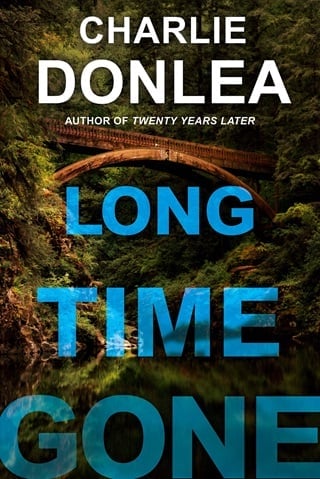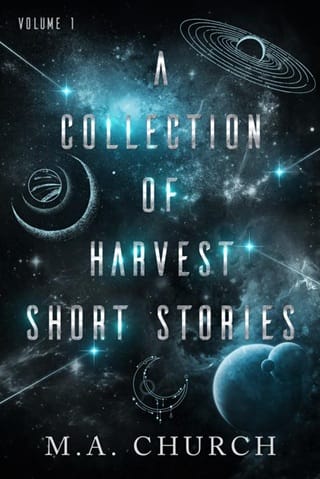CHAPTER 4 - Raleigh, North Carolina Tuesday, July 2, 2024
CHAPTER 4
Raleigh, North Carolina Tuesday, July 2, 2024
THE DAILY DRIP WAS ITS USUAL BUSTLING SELF, EVEN AT NINE AT night. The city, it seemed, lived on caffeine, and its residents took in large quantities at all times of day and night. Sloan sat at a tall table in the middle of the café, within easy sight of the entrance. There had been no image of James the genealogist on the website where she found him. She expected a middle-aged man with glasses and a pen protector, but instead, at just past 9:00 p.m., a man in his early twenties walked into the café and looked around, lifting his hand in a subtle wave and mouthing her name. Sloan?
Sloan smiled and nodded.
Jamesshe mouthed back.
The man nodded and walked over.
“James Clayton.”
He reached out and Sloan shook his hand.
“Sloan Hastings,” she said with a crinkle to her left eye. “You don’t look like a genealogist.”
“Really? What’s a genealogist supposed to look like?”
“I don’t know. Older, I guess. More studious?”
“You mean nerdy?”
James sported an I-work-from-home scruff and a frat-boy hairdo. He looked much more like a college student than someone who studied family trees for a living.
“It’s okay,” James said. “I get that a lot. Everyone expects a seventy-year-old dude with white hair and glasses. But don’t worry, I know what I’m doing.”
“I trust you. Thanks again for meeting so quickly.”
“Sure thing. Most of my work is done online or over the phone. It’s rare that I actually meet a client in person. When you said you were in Raleigh, I jumped at the chance to get out of my apartment and talk face-to-face with a client.”
A few minutes later they each had a cup of coffee in front of them.
“So how can I help?” James asked.
Sloan opened her computer.
“I just started my fellowship in forensic pathology.”
“What’s that mean? You’re a medical examiner?”
“Not yet. But I will be in a couple of years. My first year of training is a research year. My topic of interest is forensic and investigative genealogy, and I need someone in the know to guide me through the ins and outs of the topic.”
James smiled. “I can do that.”
“I need to learn how online genealogy databases and the genetic information they contain are being used to solve years-old cold cases. The Golden State Killer was offered as an example.”
James pulsed his eyebrows. “The Golden State Killer was the first. At least, the first case that went mainstream. And it set a precedent.”
“Okay,” Sloan said, tapping on her keyboard and taking notes. “Let’s start there. Tell me how it works. Explain how the guy got caught forty years after he committed the crimes, simply from a family member submitting their DNA to an online site.”
“Sure,” James said. “How much do you know about the case?”
“My department chair gave me a quick rundown yesterday, but I’m looking for a deeper explanation on the inner workings of forensic genealogy.”
“Got it. Stop me if I wander too far into the weeds.”
Sloan nodded and tapped away at her computer as James spoke.
“The Golden State Killer was a serial rapist and murderer who terrorized Northern California for several years in the seventies and eighties. Back in the seventies, DNA technology was not what it is today. Still, investigators knew enough to preserve DNA-laced evidence for future use. In the case of the Golden State Killer, that DNA evidence was in the form of rape kits.”
“So rape kits were done on his victims, and those kits were stored in evidence for decades?”
“Correct. It was 2017 when cold case detectives kicked their investigation into overdrive. That meant the rape kits had been preserved for close to forty years before DNA was pulled from sperm cells sequestered in them.”
“Amazing.” Sloan tapped away. “Talk me through the process. How did the killer’s DNA, which authorities had in their possession for decades, suddenly lead to the killer being identified forty years after he committed the crimes?”
“In 2017, with the Golden State Killer case ice cold, a clever investigator decided to submit the killer’s DNA—taken from one of the rape kits—to a genealogy website and create a ‘fake’ genetic profile. Fake in the sense that the DNA did not belong to the detective creating the profile. From there, the investigator attempted to match that DNA profile to other online users who were innocently looking to build family trees and delve into their heritage. Any match that came back would obviously be from a relative of the killer.”
“Ah, now I see.”
Sloan continued to type.
“The investigators jumped through a lot of legal hoops, and ultimately had to convince the executives of the genealogy site to allow them access—although there is still much debate about whether what this particular investigator did was ethical, let alone legal. Anyway, the genealogist ultimately matched the killer’s DNA to a distant relative—a second cousin—who had submitted their DNA and created their own profile, for the sole purpose of looking into his ancestry. Once the authorities identified the killer as a descendent of a particular family, they investigated all the men who could possibly be related to that second cousin. Eventually, they settled on one suspect.”
“How did they narrow their search down?”
“Geographically, at first. Out of all the relatives, only one lived in Northern California at the time the crimes were committed. But also, the detectives knew from the DNA profile that the killer had blue eyes. They searched DMV records and driver’s license info to confirm that the man they had in their sights also had blue eyes. It was enough to secure a warrant. Then they quietly worked with the waste management company that collected the suspect’s garbage, and picked through the man’s trash until they found a good source of DNA. When they ran it, it was an exact match to the DNA from the rape kit. Case closed.”
Sloan tapped a few last keystrokes. “You mentioned ethical or legal issues with the way authorities handled the case.”
“Right. One argument is that it’s an invasion of privacy for authorities to tap into these online databases of the public’s DNA, since the people submitting their DNA are not openly giving permission to law enforcement to use their profiles. The Golden State Killer case caused many of the online genealogy sites to change their privacy policies, and some have even restricted law enforcement from accessing their databases. It’s turning into an ugly fight and I’m sure there will soon be legislation around it.”
“Okay,” Sloan said, looking over her notes. “I need to understand how these online genealogy sites work. If I wanted to create a genetic profile myself, or build a family tree, how would I do it?”
James nodded. “First thing you’d do is register online with one of the genealogy websites, pay whatever fee they charge, and then they’d send you a kit in the mail. The kit requires you to submit your saliva—basically, they send you a test tube, you spit into it several times, and send it back. Then the company extracts your DNA from the saliva sample. Once you have a DNA profile, you log into your account and see what other relatives, close or distant, you match with. From there, you start building your family tree. There’s a lot more to it, and really, the best way to demonstrate this would be for you to actually submit a sample and let me guide you through the process of building your family tree.”
Sloan hesitated. “Um, yeah, I’m not sure I want to go that far.”
“It’s no big deal. You just spit in a test tube. I’ll do the rest.”
“It’s not that. It’s just . . .”
Like a semitruck materializing out of nowhere and passing in the dead of night, headlights off and speeding in the opposite direction, Sloan’s realization was jarring and abrupt.
“Is something wrong?” James asked.
“I’m adopted,” she finally said. “I guess I hadn’t thought this out fully, but I wasn’t planning on tracking down my biological relatives.”
“Oh.” James cocked his head to the side. “I work with lots of adopted clients. It could be fun. I’d facilitate the whole thing and walk you through the results.”
Sloan considered the offer, and whether there might be ways to learn the ins and outs of online genealogy other than by creating her own DNA profile.
“Assuming I go ahead with this, what’s the turnaround time after I submit my DNA?”
“The first step would be to create a profile online. That would take no time at all. You could do that today. Then, it would typically take a week to receive the kit, and maybe six to eight weeks to have a DNA profile up and running.”
“Two months?” Sloan asked with wide eyes.
“That’s if you go through the normal channels.”
Sloan raised her eyebrows. “You have a way to get around the normal channels?”
“Of course. It’s what I do. I’m one of the lead genealogists for Your Lineage dot com.”
“How does that help me?”
“I can expedite things for you. We could have your DNA profile up and running in, say, a week. And then I can walk you through the whole process of how you create a family tree, use your DNA profile to connect with distant relatives, and trace your lineage back to the days of yesteryear.”
Sloan pouted her lower lip, thinking of her parents and what they would say about her digging into her ancestry and locating her birth parents. Then she thought of Dr. Cutty, and her warning about procrastination. She finally nodded.
“Okay, I’m in.”
 Fullepub
Fullepub 



